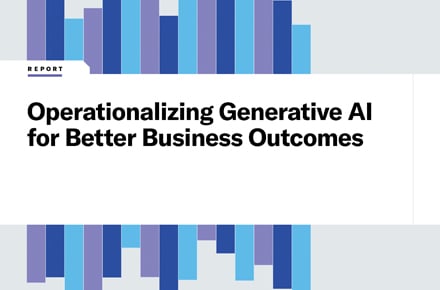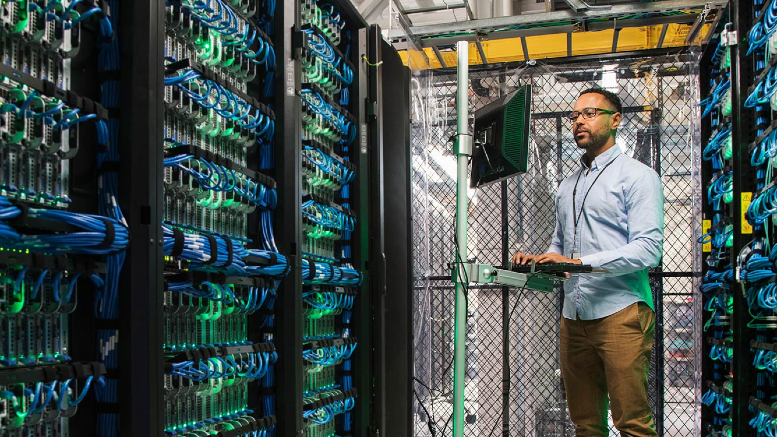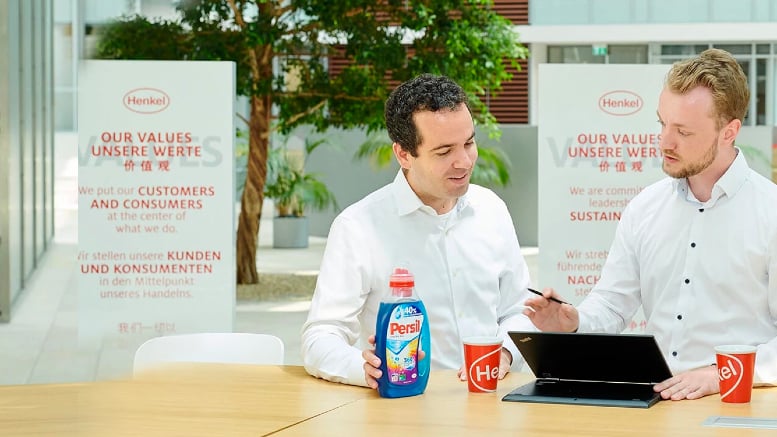00:07 Weston Morris
Welcome to the Digital Workplace Deep Dive Podcast. I'm your host, Weston Morris.
00:14 Weston Morris
If you've been a regular guest of this podcast, you know that we spend a lot of time looking at the corporate enterprise and their needs and how we can improve the digital workplace and improve the employee experience and how that improves customer experience. But this episode is a little different.
00:28 Weston Morris
We're going to focus on the public sector, state and local government. At least from my perspective, there are some major differences that I can see in the public sector. A lot of times they have an annual budget. Typically, in the middle of the year instead of talking about customers, the focus is on constituents. Enterprises can target specific desired customers to sell to and they can say, "I'm not going to sell to this group. I'm only going to sell here. That's where I get my money." The government doesn't have that choice. They have to provide services to the entire constituency regardless of income or education or even the tools that they have access to. And in many cases, the services need to be delivered in-country and maybe sometimes in-state. That means the technology and the labor for those services.
01:15 Weston Morris
So with that in mind, I'm thrilled to have as one of my guests today, Gary Buonacorsi, who has spent much of his career in the public sector before joining Unisys. Previously, he was the CIO for the state of Texas, the attorney general's office, and before that, the CIO for the state of Nevada, serving in the Health and Human Services area. So welcome to the show, Gary.
01:38 Gary Buonacorsi
Pleasure to be here, Weston. I'm glad to share my perspective. Thank you.
01:43 Weston Morris
I'm looking forward to hearing more about your thoughts on things, and I know that you've been collaborating a lot with someone on my team, Nitya Mudaliar. She's responsible for enterprise service management. I know you've been trying to figure out how technology can help improve state and local government processes and even improve the constituent experience. So, Nitya, I'm so glad you're able to join us as well today.
02:02 Nitya Mudaliar
Glad to be here. It's been a great collaboration with Gary.
02:07 Weston Morris
So, I'm going to share some of the work that the two of you have been collaborating on. I'm going to bring up here just shortly a workflow that goes back to some of your previous experience, Gary, in Nevada in Health and Human Services.
02:21 Weston Morris
Gary and Nitya, this is a beautiful workflow here of a process, a workflow that I think most state and local governments can relate to in Health and Human Services. I'm here in Michigan, so I'm going to pretend that this person here on the bottom left is Sally. She's just moved into the state with her daughter, single mom, and she's wondering what state services are available — food, health care and things like that. So, Gary, what are some of the typical problems that a constituent has in finding out the things they need to do and where you can get information?
02:52 Gary Buonacorsi
Thank you, Weston. So, this is really a typical problem, and we're going to focus on one use case, but this pretty much spans especially in Health and Human Services. There are a lot of benefits that are out there, and a lot of times constituents have two challenges. The first is they don't know what programs are out there. And number two, they don't know how to apply for them, and the process could be oftentimes really burdensome, especially if it's an older system that hasn't been refreshed for a while. So, it's a really physical challenge for them because many times they still have to come into an office.
03:21 Gary Buonacorsi
One of the things we'll talk about today is how does technology address some of those problems. We'll talk specifically around the intake process. This is where the problem, or the challenge, really comes in up front. If you're a constituent, in this case Sally, and you're trying to figure out what do I do, normally what you would have done in the past is you would have gone into a physical office. You would have to sit down in front of a caseworker. You would have to fill out the paperwork. They would tell you what additional paperwork you need. You'd have to go back home. You'd have to come back to the office and they'd say, oh, you missed this one. And it's a back and forth, and it's a really cumbersome, slow process.
04:02 Gary Buonacorsi
Where technology, specifically enterprise service management and automation, has really helped that process is now we're able to take not just what I would say the intake process that may be automated, whether it be in a kiosk, but nowadays we can use things like mobile phones and mobile portals to give them access to the portal itself. But more importantly, we can now leverage tools like artificial intelligence to help understand what they're looking for and help guide them not only to maybe one program, but maybe make available to them multiple programs. So, the automation gives the constituent the ability to approach the agency in multiple formats that are most suitable to them. A lot of people don't have cellphones, or if they do, they may not have connectivity, especially if it's rural or broadband. But it basically gives more opportunities and more ways for the constituent to understand what's available to them and how to apply for it.
05:01 Nitya Mudaliar
To add to what Gary was saying, how technology can actually help Sally gain more information. Because as he said, the first step is to understand what is available, what are the services or constituent services available for her in the state. She needs information and most of the time, that's half the battle if that information is available to her. Add AI to that, right? If we have a chatbot, an AI chatbot at the front end where Sally can ask, "Hey, I'm looking for SNAP benefits." It can actually pull up actual forms and information and details right over there and say, "Hey, check out these articles." The actual form itself, where you need to do this, this is how you can renew, this is how you can apply. Current or renew, because I know for a new form sometimes it's different, renewal is different, the process is different. You can actually give that information up front, reducing that anxiety and improving the experience for Sally over here.
06:12 Weston Morris
So, let's move on to the determination phase, kind of the back office. I'll introduce Frank here. He's a caseworker. You talked about how AI can help Sally on the front end. One of the things that I just ran across recently, I was talking to a state government and they gave an example of where an underage child moved into the state and they were in a foster program and they were also in the previous state part of the drug use program. Now the caseworker is trying to figure out how does that map to what we provide in our state. So, there are problems like this and others. Gary, what else are you seeing that are challenges that the caseworkers face?
06:48 Gary Buonacorsi
Yeah. So, the determination is kind of where the critical juncture of the experience happens from the agency's perspective. So, we've got Sally now has basically put in her request. Now the determination in the past has always been pretty much a manual process. They're looking at all these forms that they've got copies of. They're trying to look at it — does it meet the criteria for eligibility? It's a really complex, cumbersome process.
07:15 Gary Buonacorsi
Where we're seeing automation help in this particular challenge is the ability to have that information vetted and basically qualified by AI prior to reaching the caseworker. So, the caseworker has, for lack of a better word, probably 80%-90% confidence that the determination has already been made. So, you don't take the human out of the loop, but you have the machine help basically take some of the tediousness away from the caseworker. Now the caseworker just has to validate a little bit of what was presented to them and say, yeah, that determination looks like they're eligible, so we're going to proceed to the next step.
07:52 Nitya Mudaliar
One thing that I want to add about determination is the holistic view where we can orchestrate data from other systems where sometimes the validity might live in another system. As, Weston, you just mentioned about this complex underage kid with the drug abuse program and all that stuff, all that different information might be living in different systems. Having that orchestration done, integration, and then adding the automation allows the caseworker to holistically say, hey, yes or no, this is it. It's easy to determine that way. So, you have to understand that the data also needs to be integrated.
08:28 Gary Buonacorsi
Great point. That's a very good point.
08:31 Weston Morris
And so now we've introduced automation, right? We started off talking about AI — I mean, obviously you can't have a podcast these days and not talk about AI, but traditional automation I think still plays a very important role. And how about in the verification process? Gary, what are you seeing where there are opportunities?
08:50 Gary Buonacorsi
Yeah. So the verification process, this is where kind of another challenge exists both for the caseworker and for the constituent, because even though the constituent probably thinks they put everything they need into the intake process, during the determination, the caseworker decides, oh, I need to verify that income or I need to verify that address location. There's a verification process that sometimes takes an interaction back and forth with the constituent. Right now, it's back and forth and sometimes there used to be email.
09:24 Gary Buonacorsi
And I want to back up for one second. Something happens at determination — a lot of people don't understand — there's a timer that starts in a SNAP program specifically. From the time you make the request, technically from the time they make the request but using that determination, you have 30 calendar days, not workdays, 30 calendar days to either issue or deny that particular benefit. So, you have a clock that's running, so anything that slows that clock down like a verification delay where you're going back and forth — how do you get ahold of that particular constituent? Do you phone them? Do you have to email them? Do you text them? Do they have to come back into the office? Or can they do it via phone? Can they take a picture, send it into the caseworker and say, oh I see here's your utility bill, here's your income, here's your W-2, here's your last pay stub.
10:14 Gary Buonacorsi
Those are the kind of things now with technology you can accelerate that process and take that back and forth that's maybe necessary for verification and accelerate that process dramatically from the ways we used to do it in the past.
10:30 Weston Morris
I was talking with one state, and they were lamenting how much paper is still involved in many of their processes, and it doesn't need to be. I mean, this is an area, Nitya, that you focus on a lot in the enterprise space. How to take a process and automate it through ITSM platforms and other workflow tools as well.
10:48 Nitya Mudaliar
The ITSM platform I have mentioned many times, but again, it's not a tool but every time it's used as a ticketing tool, but it is a platform which can take any business process or government process and digitize it, add automation so that we can manage all the manual steps and get rid of those manual steps, add improved experience, end user experience.
Here in this case, constituent experience where we can send notifications. Think about Sally getting regular notifications or updates on things that are moving on the actual case. And if the caseworker wants something, having that notification sent out as an SMS, as a voice note, it could be a phone call, everything, and all of that logged in on the ticket itself.
11:36 Nitya Mudaliar
And think about if caseworker Frank is changed to someone else because he was out sick for some reason, all of that back and forth is actually summarized on the ticket using AI. When instead of Frank, John comes and takes over the case because Frank was out of office, he knows exactly what was going back and forth through Sally, even the conversations between them. So that is very powerful to improve both caseworker experience and the constituent experience.
12:09 Gary Buonacorsi
You mentioned substitution; I think that's important for our audience to understand. So, we think about, at least in government speak, you always think about something called integrated eligibility. These are large monolithic systems that basically do determinations across multiple programs, but usually the process stops there and becomes manual.
12:33 Gary Buonacorsi
The nice thing about using a platform like an ESM type of platform is that when you start looking at your workflows, those are other sets of business rules that you just plug in there. So as you begin, that's where the reason the automation works so well, because as policies change for your organization, maybe the legislature passes a different perspective of what they want to do from a benefits delivered perspective, you just adapt your workflow so you don't have to rebuild from the very beginning. You can adapt the workflow at the particular part that you're trying to execute, maybe a policy change. You don't have to rebuild the entire solution from end to end anymore. It really becomes more of a modular approach.
13:14 Gary Buonacorsi
And what that does is it allows the agency as a whole to become more flexible and more agile and to adapt to legislative desires and even in this case, as it's a federal program, a federal change in benefits delivery. And so, you could still automate all these workflows. You don't have to worry about if something changed you have to rebuild it from scratch.
No, that's no longer the case.
13:41 Nitya Mudaliar
Also, these platforms are making it so easy to use and build these workflows quicker. It's more drag and drop, low code, no code, plug and play kind of a situation where if we have to build a workflow from scratch, it's not going to take forever. It's not like coding, and you don't need highly skilled coders employed to get this done. You can adapt. These tools are easy and adaptive.
14:04 Weston Morris
So, you have both identified some excellent things here. Primarily, this portal or mobile access, AI to answer questions—it's helping both the employee Frank, but more importantly, it's helping the constituent with her experience as well. So now she's gone through intake, determination, verification. She's approved. Her SNAP card is being sent. One of the problems we see a lot, Gary, is a lot of this is still being sent by mail, and it's a high theft problem. So, what are some opportunities you've seen for improvement here?
14:35 Gary Buonacorsi
Yeah. And this is a challenge too. I mentioned the 30-day window at the beginning. So, from the federal government's perspective, if you approve it and you disperse the card, technically you've met that 30-day window. But from the constituent's perspective, if they didn't get the card or the card was stolen and the mail system today is fairly slow—I don't know about you guys, but sometimes my mail takes a long time to get from point A to point B. So, you might have met the rule of law from the federal government from a disbursement perspective, but from the constituent, hey, I still don't have food stamps, my kid's still hungry and they're calling on the phone, they're bugging the caseworker, they're showing up at the front desk. It becomes a real problem.
15:20 Gary Buonacorsi
So, there's a lot of ways that we can apply technology to basically solve some of those problems. What we're seeing across the country, we're seeing more and more use of what I call self-service kiosks that can disperse benefit cards on-premises. So, if someone's urgent and they don't want to wait for the mail, they can come into the office and they can physically pick up their SNAP card or EBT card right from the kiosk. They know who they are, they know their case number, and basically they'll dispense it out, preload it and then go ahead and buy groceries five minutes after leaving the agency.
15:57 Gary Buonacorsi
So, the technology is basically taking the mail out of the middle in this case and basically accelerating so the constituent can decide how do they want to receive their benefits—in the mail or they want to come in and get it dispersed through a kiosk. It's a really novel approach and I think it's something that's going to make the constituent experience much better going forward.
16:24 Weston Morris
Yeah, and it's more secure as well. Another difference that I'm seeing here between the corporate world and enterprises and government agencies is the challenge of dealing with the federal government and how rapidly changes can come from the federal government that just totally change your world. Now that does affect certain enterprises as well—banking, pharmaceutical, they're not immune to government changes, but it seems like it's even more of a problem for state governments.
16:53 Weston Morris
So, here's an example here. You talk about SNAP benefits here in the U.S. There's been a recent change with who is allowed to, who's qualified, and so someone may have been and now they're not. And so now Sally is sitting here wondering, am I still qualified? How do I get this information? What can help speed up getting answers to questions like that, Gary?
17:17 Gary Buonacorsi
So, if you think about where we started with the request intake, we did that in a couple of different ways. We talked about going to a portal, we talked about coming into the office physically, we talked about using a mobile device to access it. So, at this point in time, Sally's already got what I would call a case, and she's got a caseworker that's assigned to her. So, she's not new to this system.
17:44 Gary Buonacorsi
Well, she should be able to use those same types of tools that she used earlier to basically query the system again to say, hey, has something changed in my environment or to my eligibility that I'm not aware of? Or maybe her circumstances changed, maybe she got a job, maybe she's making a little bit more money, or maybe she was unemployed before. Maybe she's now working, but she's still under what I would say the poverty level, but she still qualifies. So, she can now do a lot of this stuff and query. We talked about using basically a level of intelligence in the system to help her walk through that process.
18:24 Gary Buonacorsi
So, what this does is two things. Not only does it give her the answer she's looking for quicker and more accurately, but it also frees the caseworker from having to follow up with her. If she's going to query him, the whole back and forth that we avoided going through this process at the beginning, we're basically stopping it at the very first time, getting her the knowledge that she needs to make a decision. Do I need to do something different? The system will tell her if she needs to do something different, and that's where I think the biggest change is. So, taking the physical process out, using automation to solve that challenge for the constituent, give them the knowledge they need to make the decision they want, and then if they decide to go forward, the whole automated process starts all over again.
19:11 Weston Morris
You used a word in there that's been used multiple times here. It's the knowledge, getting access to knowledge. At the intake, it's times when she just doesn't know what to do to fill out a form. What does the question mean? What does the term mean? The same thing for Frank. He's dealing with an oddball case. Somebody somewhere, some caseworker somewhere knows how to solve this problem; it's just not documented anywhere. And now lastly here, the knowledge that's having to react to the changes like here in federal government law and policy that now make out of date the knowledge you have in place.
19:49 Weston Morris
So, this is something that I'd just like to comment on. Here at Unisys, we've spent a lot of time, even in our service desk, evaluating how do we make sure knowledge articles can be created, can be kept up to date, identifying what's out of date, identifying what's working, what's not. And that's something where again, AI is playing a major role in being able to find the needle in the haystack, like in Frank's case. Maybe there's another individual elsewhere on the team that has the answer, but Frank doesn't know that this person has the answer.
This is where AI can tap into notes and articles and comments and chats and things like that to say, oh, Frank, here's the answer. It's actually something that somebody else had, and that even helps Sally here as well.
20:37 Gary Buonacorsi
And there's one more point I forgot I was going to make earlier, and I was going to come back to it. I just forgot, but I want to make something that's really unique about applying this type of automation and workflows to it. There's another aspect that really is a challenge, especially in Health and Human Services. This is called multiple languages.
21:01 Gary Buonacorsi
You have to serve a lot of constituents from a lot of communities that speak a lot of different languages. And so, one of the challenges in the traditional system is you had to go find someone that could translate. And if you didn't have anybody that could speak that particular language on that particular day, they would turn that constituent away and they would have to come back another time.
21:25 Gary Buonacorsi
What the automation is doing and what we're doing to help our customers to help their constituents is we're doing that automatic translation. So whatever language that Sally wants to ask in and just feels comfortable working in the environment, we can translate all this workflow into her language. And then when it gets to Frank, say he speaks English and Sally speaks Spanish, it gets translated back into English so that Frank doesn't have to worry about a translator to interpret what he's hearing from his constituents. So, the process, the language barrier begins to shrink as well. So what it does, it allows the agency to service more and more broad population sets and service more and more areas where they may not have someone on board that could speak that language, but they could have the machine or the machine language help basically automate that process and translate for them on the fly. So, it's a pretty wild and powerful technology. It's revolutionary in the way human services is being delivered.
22:29 Weston Morris
I love that you brought that up. And if you look at if we were having this podcast last year, the state of the art would have been language translation through chat, right? But now today, if we go back to the disbursement when Sally is coming up to one of these kiosks and she needs help, the technology exists now to actually speak and have the language translated in almost real time so that she's speaking to someone else and they're speaking maybe English, she's speaking Spanish or the other way around. And it just works. It's pretty impressive.
23:04 Weston Morris
Well, we have one more step on the process here. We're going to go into the back office. I'm going to introduce you to Joan here. Joan is, of course, looking at fraud. This is a big area of fraud, right? This is essentially money that's being handed out with the SNAP cards, and there are a lot of people that just, that's their job in life is to figure out how to rip off the government. So, Nitya, what are some thoughts that you have about what we can do in the back office?
23:31 Nitya Mudaliar
AI poses a lot of help in fraud detection. AI looks at the trends. If the location doesn't match, if the shipping location doesn't match the address, we can have all these kinds of automatic detections that can be built in to identify or flag potential frauds. And that is absolutely helpful with fraud prevention.
23:55 Weston Morris
There's another thing I listed here, Nitya, and I've always complained about this. I've said for years we've been able to lock and wipe and track our cellphones. Why can't we do it with our laptops? Well, except we can. This is now possible. So, Joan here in the fraud department might also be looking at maybe internal fraud. So, she's looking at consumers or the constituency. I did give one quick example here where the IT department, what we have implemented for them is this ability to geotrack, locate and geofence PCs.
24:28 Weston Morris
So, the company in this case had a job posting. They went through the entire interview process with this person, hired the person, shipped them a laptop that gives them access to everything in the corporate environment. Well, we detected two days later it shows up in Pakistan. And our rules worked immediately. That was not allowed. Immediately we detected it, we locked it, we wiped it. Complete protection from that type of fraud as well. And I know the government is really facing this type of serious deep, deep, deep fake hacking, this example that I just gave here.
24:59 Gary Buonacorsi
Absolutely. Yeah, it's a problem all around and the use of technology in government and especially in this case, Weston, we think about the story we just told, the journey that this particular caseworker went on, the journey this particular constituent went on, and then the fraud detection on the back end. We're doing a couple of things. We're improving the citizen experience. We're also improving the caseworker experience. More importantly, we're improving the agency outcomes and protecting fraud from happening and making sure the taxpayer dollars are protected, and they're driving the citizen value that it was intended to do.
25:35 Weston Morris
So, we walked through several things here. I might just recap. We've talked about the use of AI, the use of automation. Here we're talking about self-service kiosks. AI keeps showing up in multiple places here and even in the fraud detection area. And there seems like there are lots of opportunities that I think many of these are in place in the enterprise space and there's a big opportunity in the public sector space as well.
26:03 Weston Morris
So, I really appreciate both of you sharing your expertise on this. Maybe we'll just use the last couple of minutes here. What are your thoughts on maybe next steps? What is it that a government agency should be looking at if they're considering taking advantage of any of these things?
26:21 Gary Buonacorsi
I'll take a first stab at it. So, it's interesting right now, the federal government's asking a lot of state and local governments as well to look at their processes, look at their solutions and their systems and to see where they can find improvement. And I think the time right now is ripe for agencies to say, hey, we've done it this way for a long time. It's a pretty manual process. Maybe it's time to look at folks like Unisys. How can they come in and help us take a different perspective on what's the art of the possible? And we can show you how we've done it for other people as well, other states, other localities. So, the time right now is probably the most opportunistic time we've had in government to make a change and what I call move the football forward. For a long time, we just did it the way we always did it. I think now it's an opportunity to try something new that's really going to improve everybody's experience and save taxpayer dollars.
27:10 Weston Morris
Love it. Great suggestions. Nitya, do you have any thoughts?
27:15 Nitya Mudaliar
So, the agencies have already invested in tools and platforms. They already have it in their box of tools and stuff. What they need is guidance as a partnership to understand, hey, how do we get the best ROI out of this? Sometimes we have to do a rip and replace, sometimes we don't. And we need to understand what that outcome is and what is that end constituent experience and the caseworker experience that they want improved. And it is possible. Sometimes they've already invested in their platforms. We just have to get the implementation correctly, get the value out of it correctly.
27:56 Weston Morris
Well, I'm sure our listeners, if they've listened this far, they're probably eager to have a follow-on conversation with you. And I know both of you are open to that. Both of you have great LinkedIn profiles and post there regularly. I'll post those if that's OK with you guys. I'll post them in the speaker notes. People can reach out to you and follow up. And I know you'd like to have a follow-up conversation with them.
28:17 Gary Buonacorsi
Absolutely.
28:19 Weston Morris
Well, my guests today have been Gary Buonacorsi and Nitya Mudaliar. We really do appreciate the time that you spent here educating us. Gary, Nitya, thanks for coming today.
28:30 Gary Buonacorsi
Been a pleasure, Weston.
28:33 Weston Morris
You've been listening to the Digital Workplace Deep Dive podcast. I'm your host, Weston Morris. Thanks for listening.




















